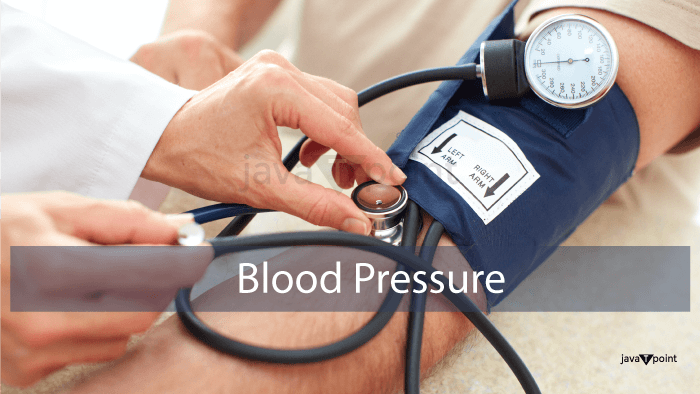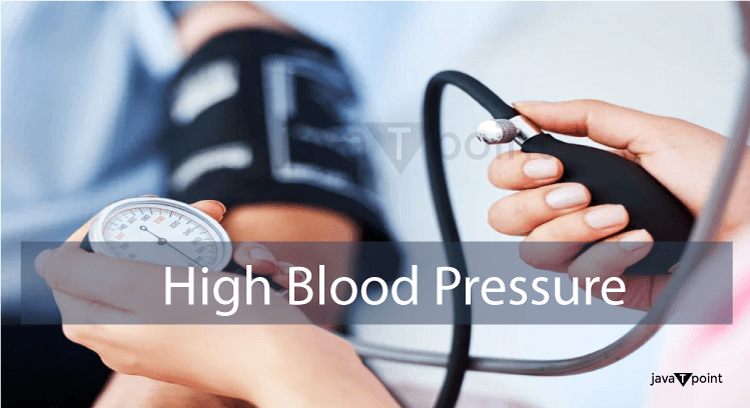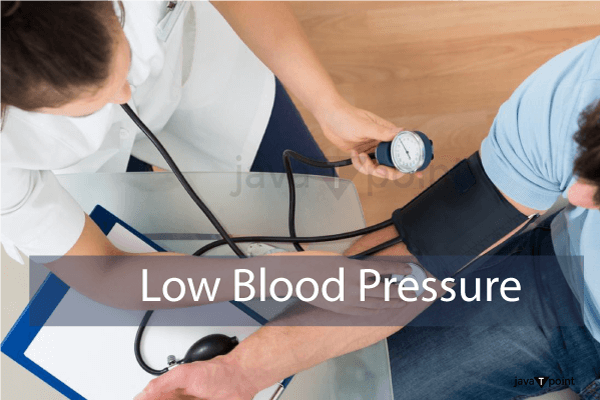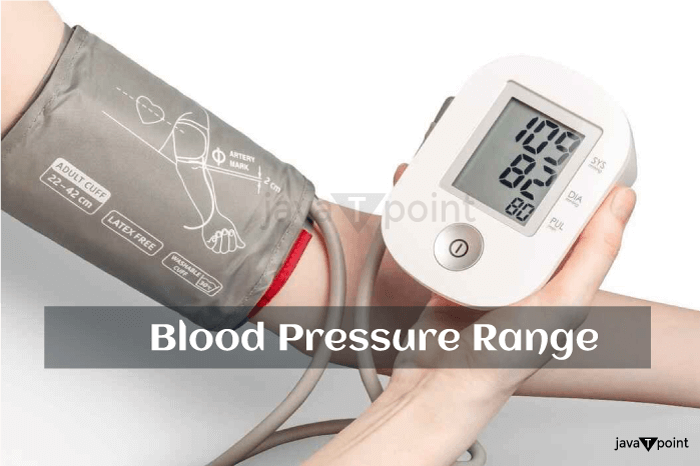Blood Pressure RangeBlood Pressure (BP)The blood's force against the walls of arteries is measured as blood pressure. The heart pumps blood into arteries with every heartbeat and occurs 60 to 100 times every minute. 
Blood pressure fluctuates throughout the day. It is affected by several things, such as body position, exercise, sleep, and breathing. Heart failure, stroke, heart attack, or kidney damage can occur from persistent hypertension. BP is essential as it delivers WBC and hormones like insulin. Meaning of blood pressure numbers
Measuring blood pressureThe ideal time to take your blood pressure is when you are calm and seated. A pressure cuff that inflates and wraps around your upper arm is typically used for measuring blood pressure. This cuff is a component of a device known as a sphygmomanometer. According to what your body requires, your BP varies. Your doctor may take multiple additional blood pressure readings if a reading is high before determining your high blood pressure. Things that can impact readings of blood pressure:
High Blood Pressure (Hypertension)Hypertension is occurred due to dangerous lifestyle choices like smoking, being overweight, alcohol consumption, and lack of exercise. The chance of developing several major long-term health conditions, such as coronary heart disease, is increased by high blood pressure. 
Symptoms and indicators for high blood pressureSince high blood pressure typically has no signs or warnings, many people are unaware they have it. The only method to determine if you have high BP is to measure it. Some people with hypertension might have the following symptoms:
Types of high blood pressure1. Primary hypertension When your BP is too high but not due to a medical issue, this is known as primary hypertension. Obesity, family history, and a poor diet cause this kind of hypertension. High blood pressure can rise with atherosclerosis. 2. Secondary Hypertension Some health issues or the use of specific medications can lead to secondary high blood pressure. Secondary hypertension can occur from the following health issues and medicines:
High blood pressure and risk1. Heart Disease Your arteries become less elastic by hypertension, which reduces the supply of blood and oxygen to the heart and increases the chances of heart disease. Additionally, the less blood supply to the heart can result in the following:
2. Eye Problems Several tiny blood vessels in your eyes are easily strained or harmed by hypertension. Additionally, it might make your optic nerve bulge. Sometimes, lowering blood pressure might help with eyesight issues. However, uncontrolled high blood pressure can result in irreversible eyesight loss or disability. 3. Metabolic Syndrome This syndrome is a collection of metabolic diseases in the body. It includes the abnormal breakdown of glucose. You are more susceptible to developing diabetes, heart disease, and stroke if you have this illness. 4. Changes in Memory High bp may affect one's capacity to think, remember, and learn. 5. Kidney Issues Your kidneys aid in detoxifying your body and controlling its complex operations. The kidney's arteries may become damaged as a result of hypertension. This might impact their performance and result in kidney failure in the worst-case scenario. Low Blood PressureIf systolic and diastolic blood pressure value is less than 90 and 60 mmHg is often referred to as having low BP. 
Causes of low blood pressure
Symptoms of low blood pressure
Do's and Don't to Reduce Your Low Blood Pressure SymptomsDo's
Don't
Blood Pressure Range
FAQs on Blood Pressure1. Which factors raise your risk of having high BP?Answer: 1) Age: As you become older, the probability of having hypertension increases. Up until age 64, gents are more prone than ladies to hypertension. At age 65, ladies are more prone to have hypertension.
If your father, mother, or sibling has hypertension, your chances of getting it are increased. 2) Race: Black people experience hypertension earlier in life than white people. 3) Overweight or Obesity: The kidneys and blood arteries change due to extra weight. These changes increase BP. The possibility of heart disease and related risks, such as excessive cholesterol, is also increased by being obese or overweight. 4) Physical Inactivity: Exercise keeps your heart and blood vessels robust and healthy, which may lower your blood pressure. Maintaining an ideal weight helps to reduce your blood pressure. 5) Stress: A lot of tension might cause high BP. 2. How can I lower or manage my blood pressure?Answer:
3. What values for blood pressure are considered normal?Answer: The normal range for bp is 90/60 mmHg to 120/80 mmHg. 4. What symptoms indicate high blood pressure?Answer: Only a doctor or other qualified medical professional can figure out if you're suffering from hypertension. Measuring the bp is easy and painless. High bp typically has no symptoms, and many people are unaware they have it. 5. Which drinks are beneficial for high bp?Answer: The following drinks can aid in lowering bp: 1) Skimmed Milk: Yogurt and skim milk, the two having a low-fat content, that can aid in lowering high bp. According to a study, switching to low-fat dairy products instead of full-fat dairy products can lower bp. Palmitic acid is present in full-fat dairy and is not good for your body. It can aid in increasing bp. You can prevent palmitic acid and lower your bp by ingesting skimmed milk. 2) Tomato Juice: Daily consumption of a single cup of tomato juice can improve heart health. Every day cup of tomato juice without salt lowers systolic and diastolic bp. 3) Beetroot Juice: Nitrate helps enhance blood circulation in the body. Nitrate is present in the beetroot. That's why beetroot juice aid in reducing bp. 4) Hibiscus Tea: Anthocyanin, an antioxidant, can be found in hibiscus tea. According to research, drinking two cups of hibiscus tea daily for at least two weeks can lower bp. 5) Pomegranate Juice: Pomegranate juice has potent anti-inflammatory properties and is good to treat for hypertension. According to one study, males who drank at least a 1/4 cup of pomegranate juice every day for two weeks had reduced blood pressure. Many researchers also agree that pomegranate juice helps to lower blood pressure.
Next TopicBatrachospermum
|
 For Videos Join Our Youtube Channel: Join Now
For Videos Join Our Youtube Channel: Join Now
Feedback
- Send your Feedback to [email protected]
Help Others, Please Share









